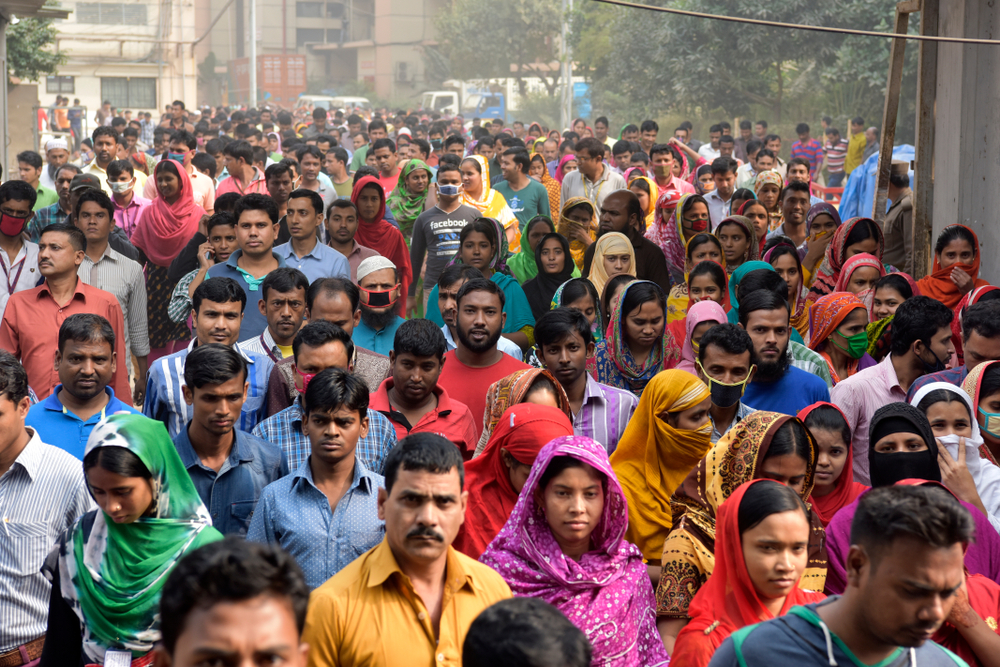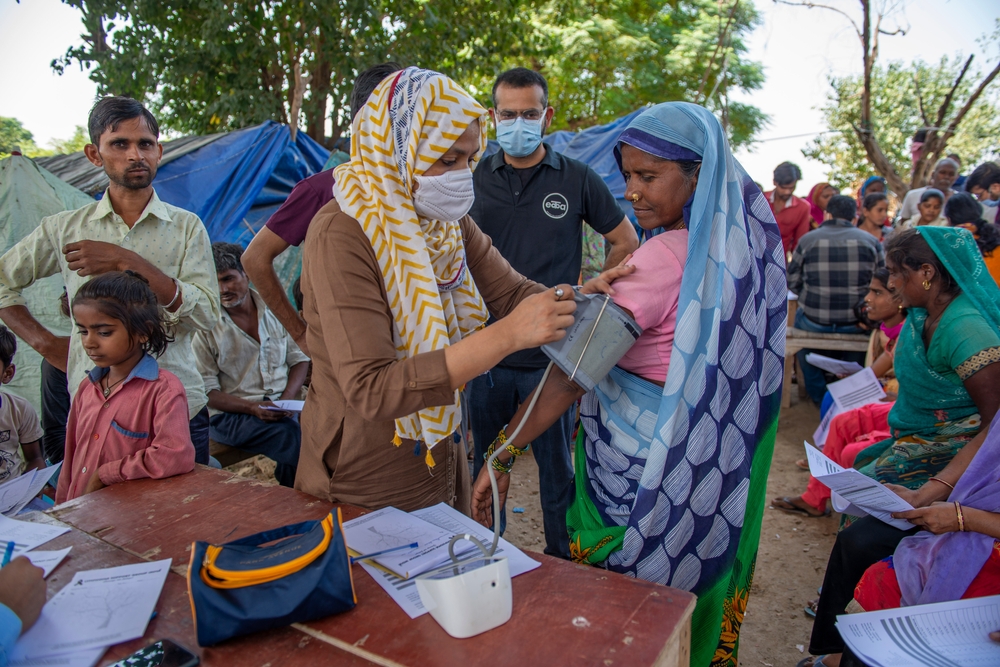
Severe mental illnesses like schizophrenia, bipolar disorder, and depression with psychosis are conditions that can make it hard for people to carry out their daily activities. The high proportion of physical health conditions in people with of severe mental illness (SMI) is causing havoc on the lives of people with SMI in South Asia. The gravity of the situation is truly alarming as those with SMI are dying 10 to 20 years earlier than the general population, and the gap is only widening (Liu et al, 2017). While suicide is a contributing factor, an astonishing 80% of premature deaths are attributed to physical health problems, predominantly non-communicable diseases (NCDs) like diabetes (Chan et al, 2021), hypercholesterolemia and hypertension.
This blog takes a deep dive into this alarming reality, highlighting the factors contributing to the excess disease burden from physical multimorbidity in individuals with SMI. From health risk behaviours to barriers in accessing healthcare, we explore the complex web of challenges faced by this vulnerable population.
We aim to shed light on the burning issue of increasing comorbidity of mental and physical health issues among people with SMI as well as trying to explain why we are struggling to solve this complex problem. By presenting recent research findings from Bangladesh, India, and Pakistan, we aim to raise awareness to improve services to bridge the health inequality gap. The ultimate goal is to pave the way for a brighter and healthier future for people with SMI in low- and middle-income countries.

This blog was co-authored by more than 40 people who attended the University of York CADA Implementation Science Summer School Blogging Workshop, which was run by André Tomlin and Jess Hendon from The Mental Elf in York on Friday 21st July 2023. Big thanks to everyone who joined in person and on Zoom. We had a fantastic day working with you all!
Methods
Zavala et al (2023) conducted a face-to-face survey (in 2019-21) at mental health facilities in Bangladesh, India and Pakistan, including 3,989 persons living with schizophrenia, bipolar disorder or severe depression with psychotic features.
Information was collected on self-reported Non-Communicable Diseases (NCDs), severity of mental illness, health risk behaviours (smoking, exercise, alcohol), quality of life and access to healthcare using standardised scales. Anthropometric measures and biochemical assessments were also performed.
The researchers reported the prevalences of NCDs, risk factors and healthcare utilisation, and compared the findings with the general population using the World Health Organization (WHO) ‘STEPwise Approach to Surveillance of NCDs’ reports.
Results
Based on the data collected from 3,989 people with severe mental illnesses, the researchers found:
1. High prevalence of physical health problems
- 11% had diabetes
- 23.3% had hypertension or high blood pressure
- 46.3% had overweight or obesity
These figures were higher than in the general population, 2-3 times higher for overweight and obesity; 2.5 times higher for hypercholesterolemia; while it was not possible to compare the prevalence of hypertension.
The researchers also found that the majority of respondents (94.4%) were unaware of having hypercholesterolemia, almost half with diabetes (49.2%) and with hypertension (48.5%) were previously unaware of their condition and were detected during the survey through objective measures performed in the survey.
2. High levels of under-diagnosis and low levels of treatment
- 70.8% of participants with diabetes, high blood pressure and hypercholesterolemia were previously undiagnosed
- Of those diagnosed, only around half were receiving treatment.
3. Low levels of adherence with WHO healthy lifestyle recommendations
- 45.6% did not meet WHO recommendations for physical activity
- 89.1% did not meet WHO recommendations for fruit and vegetable intake.
4. High prevalence of tobacco use
The study found that males with SMI across the three nations used tobacco in a variety of ways.
- 8% of men and 15% of women consumed smoked or smokeless tobacco. The Smoking prevalence in men was 42.8% in Bangladesh 20.1% in India and 31.7% in Pakistan
- Less than 4% of women reported smoking in each country
- Men were less likely to use tobacco products in Bangladesh and India, with odds ratios of 0.7 and 0.4, respectively. Pakistan, on the other hand, revealed a contrasting picture, with males with SMI being 2.2 times more likely to smoke.
5. A mixed picture around health screening
Despite the WHO recommendation to screen for NCDs in people with SMI only:
- 7% of the participants were screened for diabetes, 52.5% for hypertension, and 9% for hypercholesterolemia
- 4% of participants with hypercholesterolemia, 49.2% with diabetes, and 48.5 with high blood pressure were previously unaware of their condition and were detected during the survey through cholesterol, HbA1c and blood pressure measurements, respectively.

This cross-sectional survey found a high prevalence of physical health problems in people living with severe mental illness in Bangladesh, India, and Pakistan.
Conclusions
The study concludes that people with severe mental illness in South Asia have a high prevalence of non-communicable diseases (NCDs) like diabetes, hypercholesterolemia and hypertension, and this is likely due to the clustering of various health risk factors and behaviours.
Addressing physical multimorbidity in this population is crucial, highlighting the need for policymakers and healthcare professionals to recognise its significance. Prioritising prevention, screening, and treatment of NCDs among individuals with SMI is essential for improving the overall health outcomes of this vulnerable group in South Asia.

Policymakers and healthcare professionals in South Asia need to recognise the importance of physical health problems in people with severe mental illness.
Strengths and limitations
Strengths
- The study was conducted in three South Asian countries (Bangladesh, India, and Pakistan) to explore in-depth the health challenges and treatment gap faced by patients with SMI
- The study validates the association between SMIs and NCD risk reported by other studies from LMICs and high-income countries
- The study team was well trained and experienced in working with the local populations
- Confirmation of severe mental health disorders was made using standardised MINI international neuropsychiatric interview tool
- Standardised tools were used for data collection that allows us to compare the findings with those in the general population
- Stratified random sampling technique was used
- Verbal and written informed consents were taken from participants and caregivers.
Limitations
- Self-reported outcomes are subject to recall bias. Self-report measures were used to gather lots of the data included in this study, and many of the results use combinations of objective and self-report measures, e.g. ‘HbA1C blood test for diabetes’ combined with ‘Patient self-report of having diabetes (via clinician diagnosis)’
- Participants reporting to tertiary care hospitals were approached, which might underestimate the prevalence of NCDs in people with SMI without access to healthcare.
- Comparisons with the general population were made on the basis of results reported in another survey (WHO Stepwise) so these results should be generalised with caution. There was some time lag between these studies, during which a number of parameters of interest might have changed
- Researchers relied on blood test results from the mental health facilities with no standardisation between laboratories

The researchers used a combination of objective and self-report measures in this study, which means that these results are likely to suffer from recall bias and detection bias.
Implications for practice
- In line with international guidelines, we need to focus on the early detection, prevention and management of physical health problems in people with severe mental illness living in South Asia
- In LMICs, there is a need to develop culturally acceptable interventions to address health risks behaviours. These interventions should be brief and designed so they can be delivered by non-specialist personnel
- The integration of physical and mental healthcare may help scale up solutions and bridge the implementation gap
- We must prioritise the contextualisation of monitoring and management guidelines for physical health problems in people with SMI living in South Asia.

We need to focus on the early detection, prevention and management of physical health problems in people with severe mental illness living in South Asia.
Statement of interest
A group of more than 40 people co-authored this blog. The group was made up of clinicians, researchers and policy-makers from South Asia and Europe, all with an interest in mental and physical health. Two of the authors of the research study that is the focus of this blog were present at the workshop: Gerardo Zavala and Najma Siddiqi.
Acknowledgements
Thanks to everyone who contributed to this blog, which was written during the University of York CADA Implementation Science Summer School on Friday 21st July 2023. The list of authors includes Shujat Faqir, Dr Saima Afaq, Hira Shakoor, Aliya Ayub, Zala Khan, Aatik Arsh, Ashraful Alam Anas, Faiza Aslam, Nida Afsheen, Rubab Ayesha, Kousar Ishaq, Najma Hayat, Maham Zahid, Midhat Fazeen, Fakiha Salam, Dr Asima Khan, Shahreen Ansar Khan, Badruddin Saify, Syedah Saira Bokhari, Ali Hussaini, Fatima Khalid Qazi, Maryiam Rahim, Faryal Fazal, Bushra Bibi, Sikandar Sultan, Ayesha Ahmed, Gerardo Zavala Gomez, Akseer Hussain, Fatima Jamal, Saima Aleem, Aliya Rehman, Farman Ullah Khan, Muhammad Asim, Suneel Gill, Shahreen Ansar khan, Sara Imtiaz, Anum Naz, Mehreen Faisal, Tahira bibi, Muhammad Saleem, Dr. Syeda Fatima Jamal, Dr. Fatima Khalid Qazi, Umber Khan, Faraz Siddiqi, Samarul Islam, Urooj Ashfaq & Zarak Sapeen.
The Implementation Science Summer School is funded by the NIHR Global Health Research Cohort Academic Development Award (GHR CADA).
Find out more about the Centre for IMPACT – a NIHR Global Health Research Centre established to improve mental and physical health together: https://www.impactsouthasia.com/
Links
Primary paper
Zavala, G., Haidar-Chowdhury, A., Prasad-Muliyala, K., Appuhamy, K., Aslam, F., Huque, R., . . . Boehnke, J. (2023). Prevalence of physical health conditions and health risk behaviours in people with severe mental illness in South Asia: Multi-country cross-sectional survey. BJPsych Open, 9(2), E43. doi:10.1192/bjo.2023.12 https://doi.org/10.1192/bjo.2023.12
Other references
Liu NH, Daumit GL, Dua T, Aquila R, Charlson F, Cuijpers P, et al. (2017) Excess mortality in persons with severe mental disorders: a multilevel intervention framework and priorities for clinical practice, policy and research agendas. World Psychiatry 2017; 16(1): 30–40.
Chan JKN, Wong CSM, Or PCF, Chen EYH, Chang WC. (2021) Risk of mortality and complications in patients with schizophrenia and diabetes mellitus: population based cohort study. Br J Psychiatry 2021; 219(1): 375–82.
Source link







